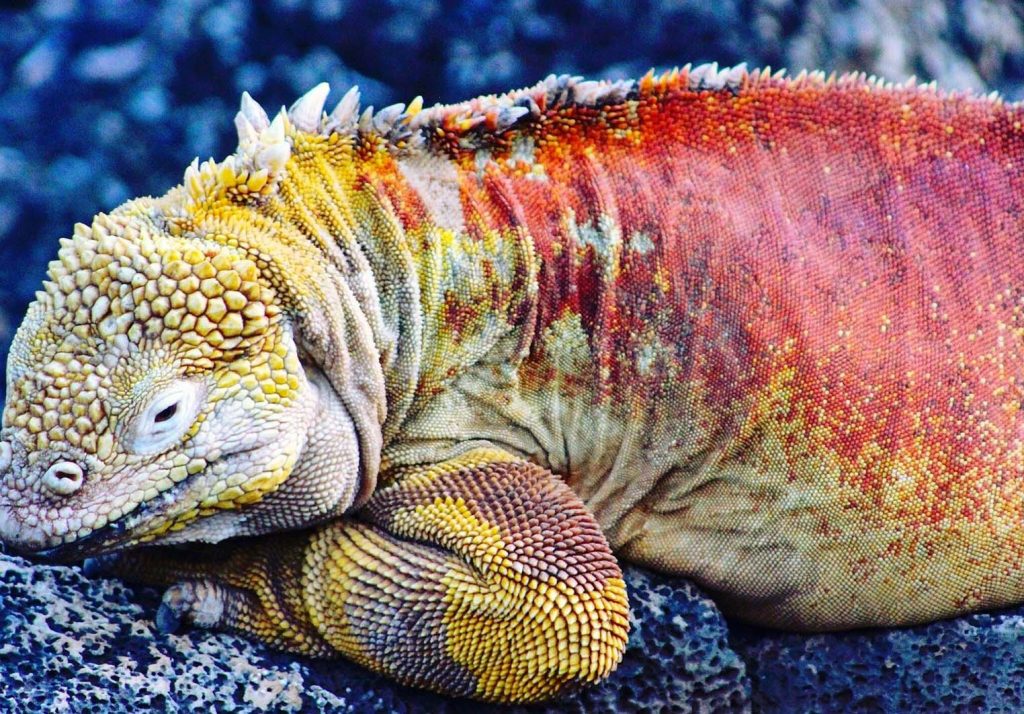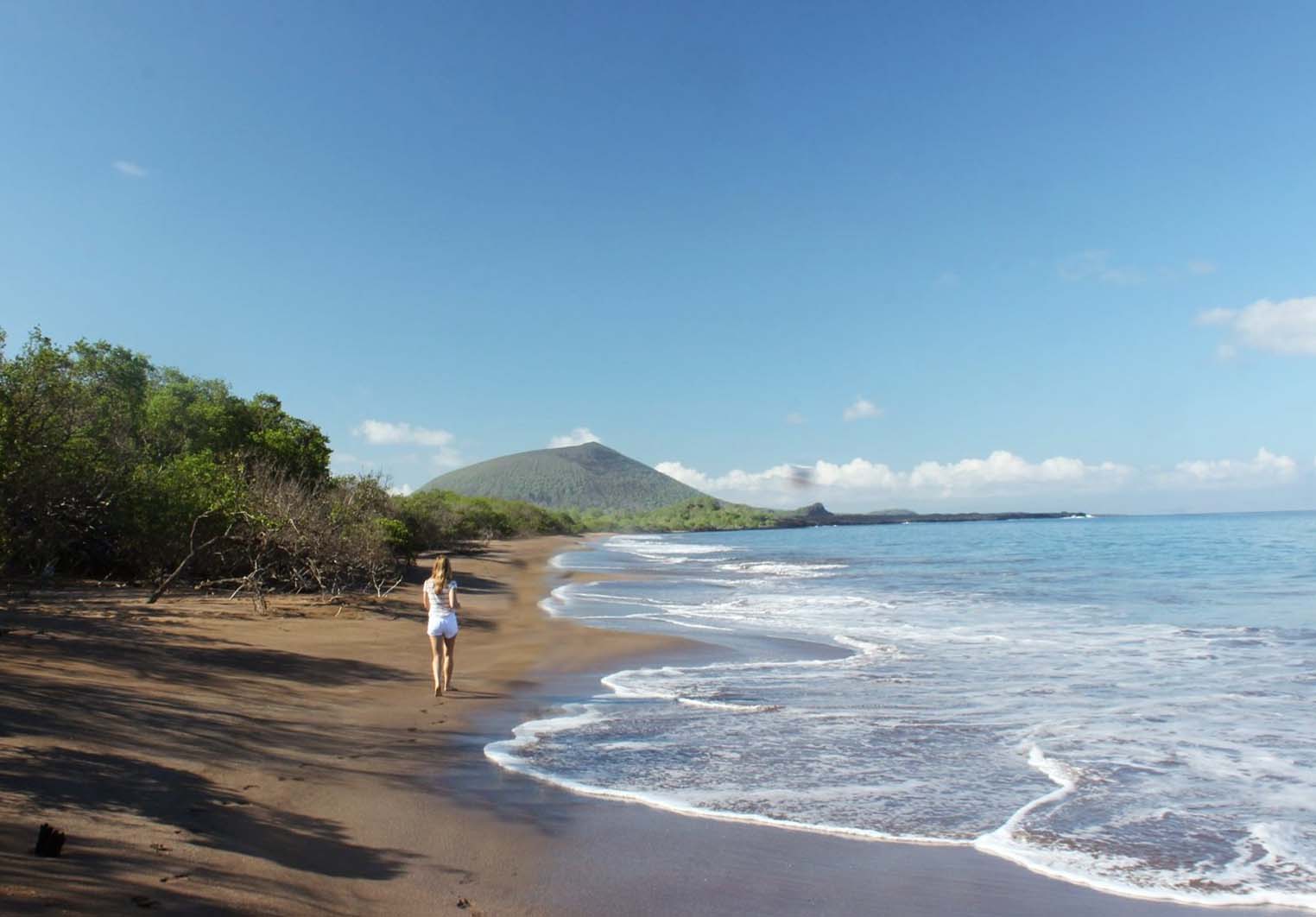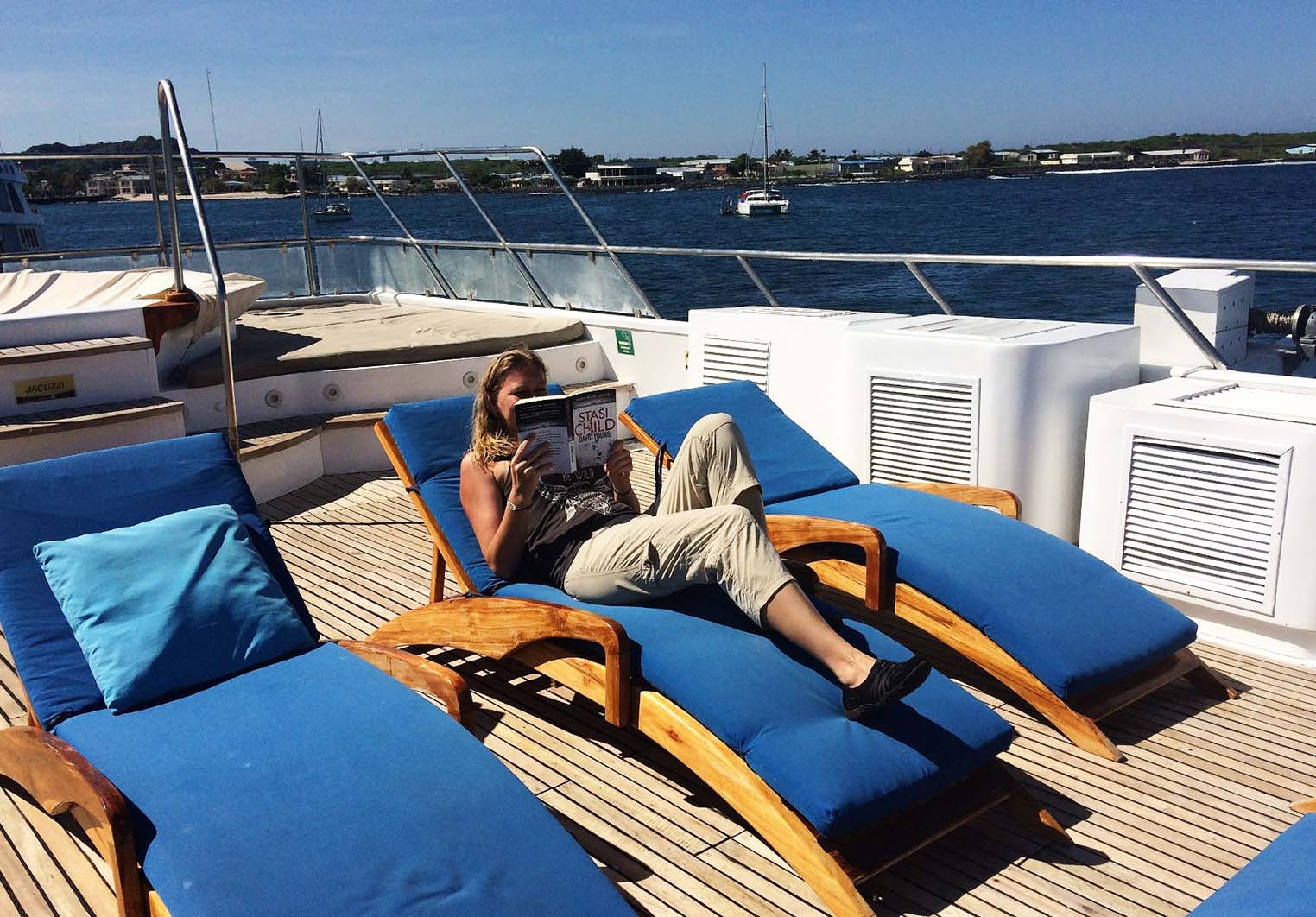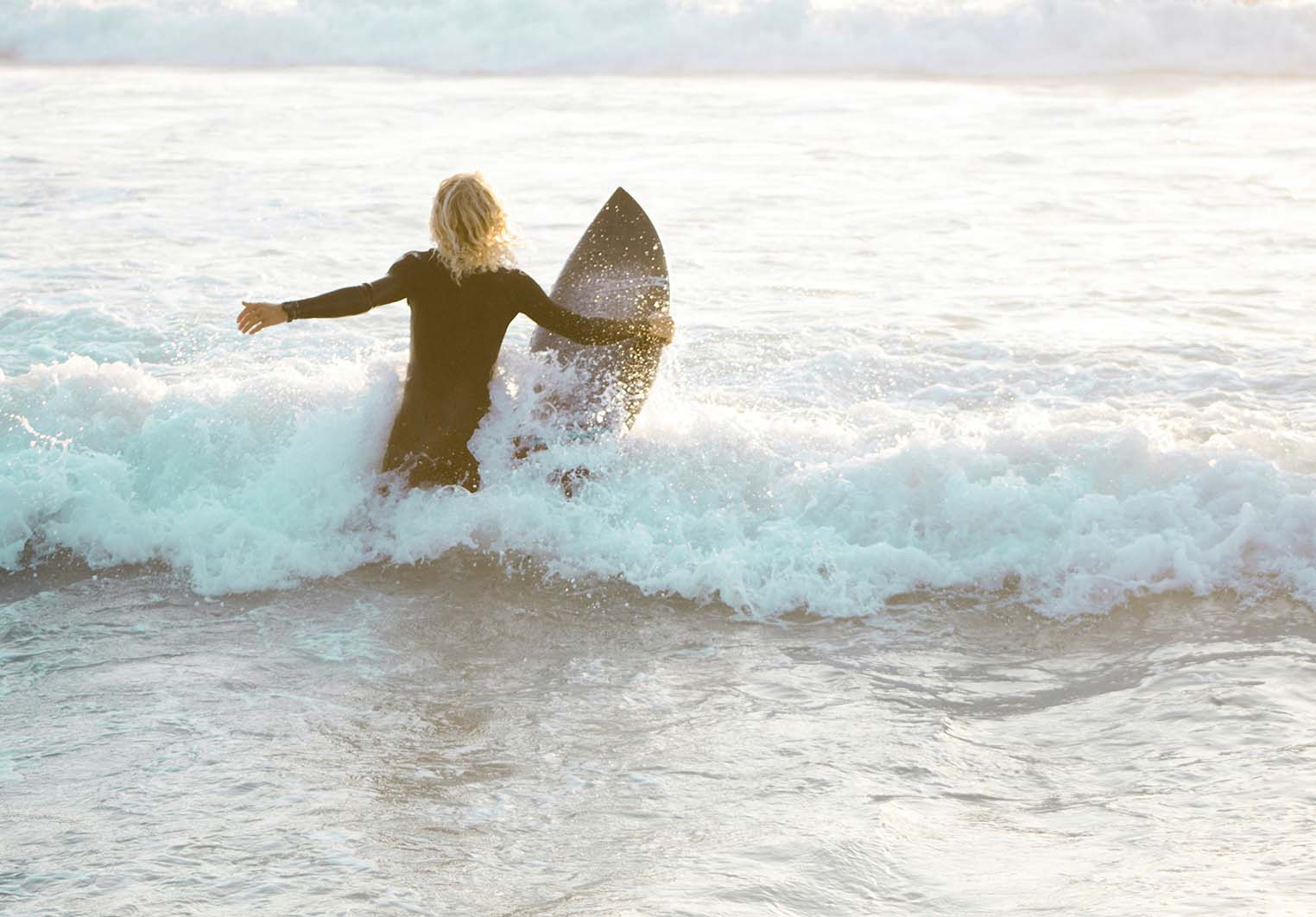From my earliest memories, the Galapagos Islands have always been my dream destination. In my mind’s eye, I envision a remote archipelago with awe-inspiring volcanic landscapes, free-roaming turtles, and giant iguanas. I imagine these islands to be largely uninhabited, and if there are people living there, the wildlife vastly outnumbers them.
I’m aware that the best way to explore these islands is by taking a Galapagos Islands cruise, sailing around the archipelago for several days, engaging in on-land excursions and snorkeling adventures, all while enjoying life at sea. A few weeks ago, I finally boarded a flight to the Galapagos Islands, and I’m eager to discover how the reality of a Galapagos cruise compares to the images in my mind.
After a two-hour flight from Guayaquil, we arrived at Baltra Island, a small island and one of the two airports in the Galapagos Islands where no one resides. As we descended, we could see the barren red terrain below. Baltra Airport is the world’s first “green” airport, meaning it operates on renewable energy sources like solar power, wind turbines, and seawater desalination. Before we could leave the airport, we had to pay a $100 national park fee, and our carry-on luggage was inspected. I quickly learned that bringing apples or any agricultural products to the islands was not allowed. Later, I found out that carrying any food ashore during land excursions was strictly prohibited.
From the airport, we took a bus to the ferry terminal, where everyone arriving at Baltra must go to the second-largest island in the archipelago, Santa Cruz Island. Just a few minutes after boarding the ferry, we encountered wildlife. As we stepped onto the boat, a pelican watched us with suspicion, enormous crabs scuttled along the shore, and countless birds soared above us. During the short ten-minute boat ride to the other island, we passed a mangrove islet where more birds and several spotted eagle rays swam in the water by the boat.
We had spent about 45 minutes in the Galapagos Islands so far, and I was already completely captivated by these islands. When we arrived on Santa Cruz, we hopped on a bus and began our first land excursion before boarding our yacht. We drove towards the center of the island, and as we got further from the coast, the gray, arid shrubs and branches covering the rocky ground gave way to lush green forests. A recent rain had just passed through the island, and the fresh scent of rain mixed with the fragrance of flowers was enchanting.
Apart from a village we passed by, a few small houses with banana trees on either side, there were no signs of human presence anywhere else. We drove past that village, and it was nothing more than a few small houses with banana trees on either side, and a donkey standing by the roadside.
Our destination? Giant tortoises! We were about to go see them in the wild, and my excitement soared as we left the main road and ventured onto a dirt path. I knew that seeing the tortoises would be a highlight of my trip. It didn’t take long before we started spotting giant tortoises in the nearby grasslands, and there were several instances where our bus had to maneuver around them on the road. Could this place be any more real?
As we continued down the road, it felt like we had entered tortoise heaven. Large and small tortoises were all around us, peacefully munching on leaves and straw in the high grass. They didn’t seem to care about us, a group of camera-toting tourists who had just disembarked from the ship.
After our tortoise encounter, we headed to a small restaurant at Rancho Manzanillo for lunch. It was located on an open terrace overlooking the tortoise’s territory. As a vegetarian, I’m always a bit concerned about food options, but here, I had nothing to worry about – my vegetarian rice dish was delicious.
With our bellies full, we all put on rubber boots and headed to a pond where tortoises like to congregate. Our naturalist guide, who is a staple on all Galapagos Island cruises, told us that tortoises are the longest-lived of all vertebrates, easily living to over 100 years. The oldest tortoise on record lived to be 152 years old, but when Charles Darwin visited the Galapagos Islands in 1835, there was already a tortoise on the island that had been living there, which wasn’t impossible.
At that time, the island had 15 different species of tortoises, but the number has since decreased to 11. In the 17th and 18th centuries, whalers and pirates who stopped on the island killed tens of thousands of tortoises. They are no longer on the brink of extinction, but they are still a threatened species, with only 15,000 remaining in the Galapagos Islands, which is a very small number.
We learned that giant tortoises only live in two places in the world: the Galapagos Islands and Aldabra Atoll in the Indian Ocean.
The term “giant” is a perfect description for these massive creatures, with lengths typically exceeding 5 feet (1.5 meters) and weights of up to 550 pounds (250 kilograms).
We spent hours with the tortoises, observing them as they ate, rested, and even mated. The two hammocks between the trees provided us with a perfect spot to relax and enjoy the experience.
After bidding farewell to these gentle giants, we headed to the port of Santa Cruz, Ayora Harbor. This small town is the most populous urban center in the Galapagos Islands with a population of 12,000, and it’s where our yacht, the Majestic, would be waiting for us to explore the islands over the next few days.
The Majestic can accommodate 16 people, and its name is fitting – it’s magnificent. It boasts eight cabins, each for two people, a stunning sun deck with a Jacuzzi and sun loungers, a beautiful dining room, and a lounge area.
Before changing into our evening attire for dinner, we had a quick orientation on our floating home with a welcome cocktail. My cabin was not large, but it didn’t feel cramped. Most importantly, it had a big and comfortable bed. The night was the time when the ship would move from one place to another, so you wanted it to be comfortable. After our first Galapagos sunset and a delicious buffet dinner, we stayed up chatting for a while, but most people returned to their cabins around 9 p.m. It had been a long day, and we would need to wake up early the next morning because a Galapagos cruise is not a laid-back one – it’s packed with short excursions and snorkeling stops.
I woke up after a reasonably good night’s sleep around 6 a.m. It was around 2 a.m. when I woke up briefly, as that’s when the ship started moving, and I had felt a bit seasick. Fortunately, that feeling had passed, and I could get a few more hours of sleep.
After I woke up, I went up to the deck for a quick morning workout because I wanted to see where we were anchored. I climbed onto the deck just in time to catch the sunrise. I could see an island to the right and another one to the left, Santiago and Isabela. A group of birds flew above my head as I did my sit-ups, and a frigatebird perched on the navigation mast watched me.
I couldn’t believe how serene it felt. It seemed like there was no one residing on the islands, and there were no other boats in sight. It felt like our ship was the only one cruising around the islands, although I knew there must be other boats out there somewhere.
After enjoying a hearty breakfast with pancakes, eggs, bread, cheese, ham, yogurt, porridge, cereal, and fresh fruit, we prepared for our first wet landing. This meant taking the small dinghy to an island nearby and getting wet up to our knees as we disembarked.
Our first stop for the day was
Santiago Island, which had been uninhabited since the 1950s when a small group of fishermen lived here. It has remained without human habitation since the last batch of fishermen left to join a larger settlement on another island.
As we jumped onto the rugged shoreline and waded through shallow waters to reach the beach, I couldn’t help but think about how this must have been what it felt like for Bishop Fray Tomas de Berlanga when he was blown off course while sailing to Peru and landed in the Galapagos Islands. Barren beaches, lush green vegetation, and the faint silhouette of a volcano in the background. The place seemed to have changed very little since then.
The beach we landed on was called Espumilla Beach because the waves hitting the shore produced foam (espuma in Spanish).
As we walked along the beach, our feet sinking into the soft, golden sand, we saw several sea turtle nests and occasional turtles popping their heads out of the water. Being able to visit such remote places made me realize that I was on a Galapagos Islands cruise, not trying to explore these islands from a “base” – because it’s places like this, where you can’t reach unless you’re on a cruise ship.
Whenever we got too close, we’d see ghost crabs quickly dart into sand holes, pelicans and blue-footed boobies would suddenly dive headfirst into the sea, vigorously plunging for food, and there was an American oystercatcher enjoying its solitude.
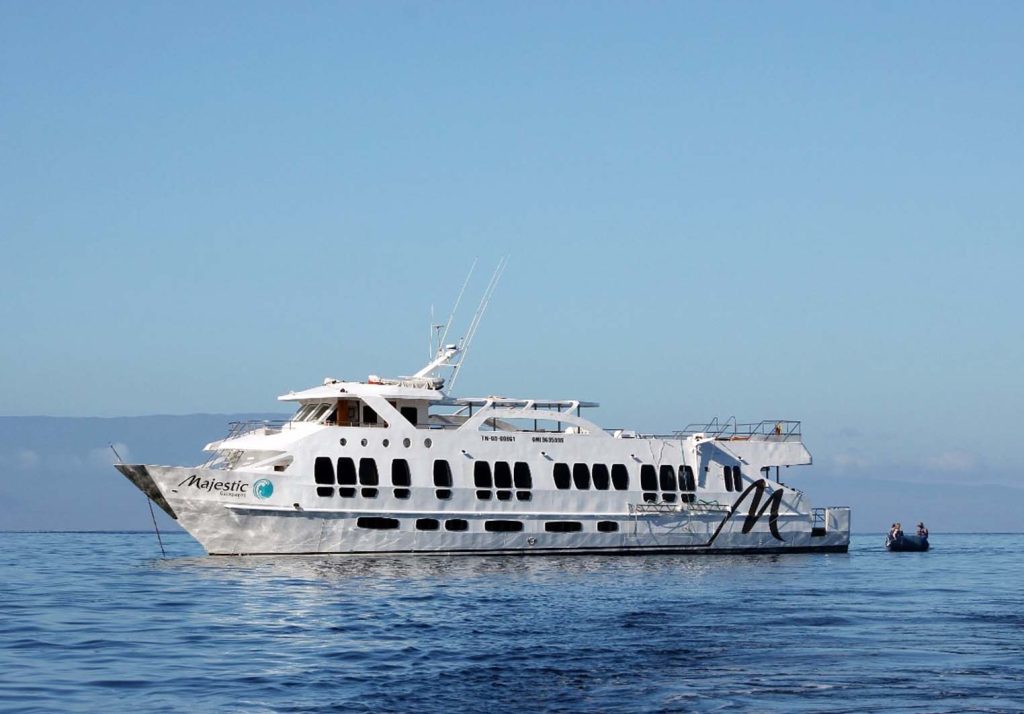
Our second stop of the day: snorkeling! Our first exploration of the underwater world of the Galapagos took place near the coast of Santiago. As soon as we plunged into the sea, we were greeted by the crystal-clear water, and we were immediately surrounded by a vibrant array of fish. During our initial snorkeling adventure, we had the pleasure of encountering a small shark, a sea turtle, and a spotted eagle ray. Not bad for a morning of snorkeling!
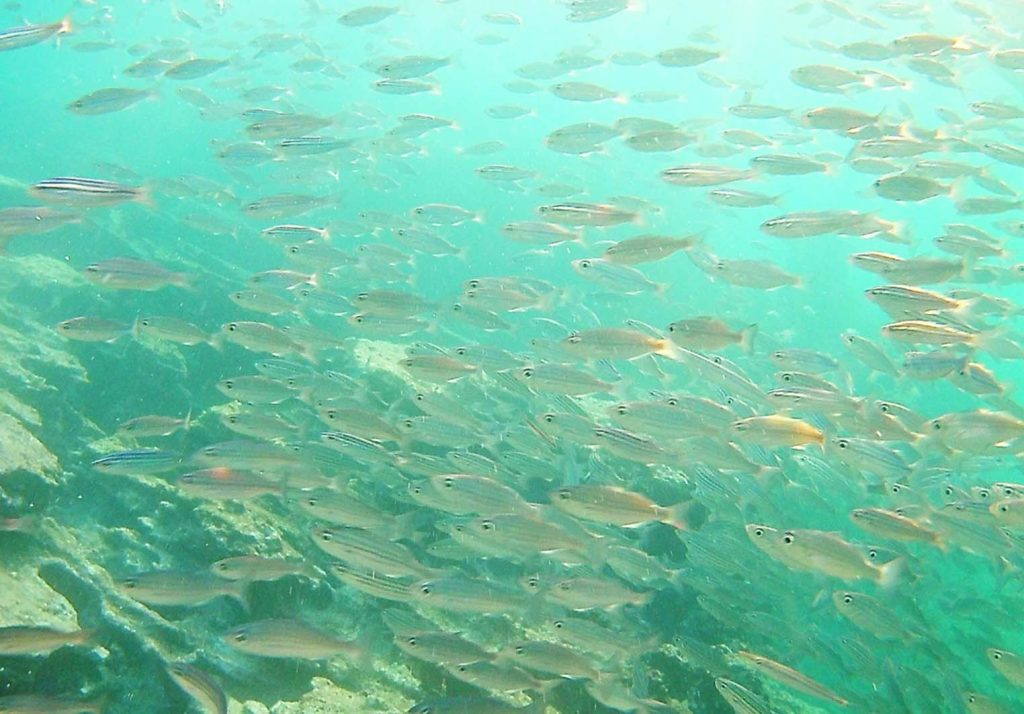
Our next adventure on the itinerary was kayaking, and it was an opportunity to explore the same coastal area we had recently discovered beneath the waves. As we embarked on our kayaking journey, we were greeted by the crystal-clear waters surrounding the Galapagos Islands. We were immediately surrounded by a kaleidoscope of colorful fish. During our first kayaking excursion, we were fortunate to encounter a small shark, a sea turtle, and a spotted eagle ray. It was a great start to our morning snorkeling adventure!
The following item on our agenda was a kayaking adventure, where we revisited the same coastal area we had previously explored underwater. However, this time, we were on the surface of the water. As we paddled along the rocky cliffs of the island, we were treated to the sight of some sea lions lazily sunbathing in the warm sunlight. Blue-footed boobies were also perched on the rocks, enjoying their sunbath. Each time I turned around, all I could see was the endless expanse of the ocean, making us feel like the only people in the world. So far, we hadn’t come across any other boats during our journey.
After enjoying lunch on board, the engines roared to life, and we set off to our next destination. As we cruised, we took some time to relax on the sun deck, soaking in the hot tub. The luxurious yacht was an integral part of our experience, enhancing our journey along with the stunning landscapes and wildlife we encountered.
Several hours later, our afternoon stop appeared on the horizon. It was a barren rock in the midst of the ocean, surrounded by smaller rocks, and it seemed desolate with no signs of life. However, the presence of several other boats soon revealed the reason for our visit: Bartolome Island boasts spectacular lava formations, with the most notable being Pinnacle Rock, a towering spire of rock.
This small island is reputed to offer some of the most breathtaking views in the Galapagos, including a climbable dormant volcano made of lava formations. Unfortunately, we had spent a bit too much time playing in the water during the morning, and we didn’t have enough time to hike the volcano before sunset. Nevertheless, we made time for another snorkeling session.
While the island we explored was devoid of terrestrial wildlife, the surrounding ocean more than compensated for it. This area was a popular hangout for Galapagos penguins, and, as expected, two playful penguins joined us in the water for some fun. Watching them dart around and playfully chase each other was highly entertaining. After they left, we leisurely swam along the rocky shoreline, encountering sharks, eagle rays, sea stars, and countless colorful fish. We all agreed that this snorkeling session was even better than the morning one, which had already been fantastic!
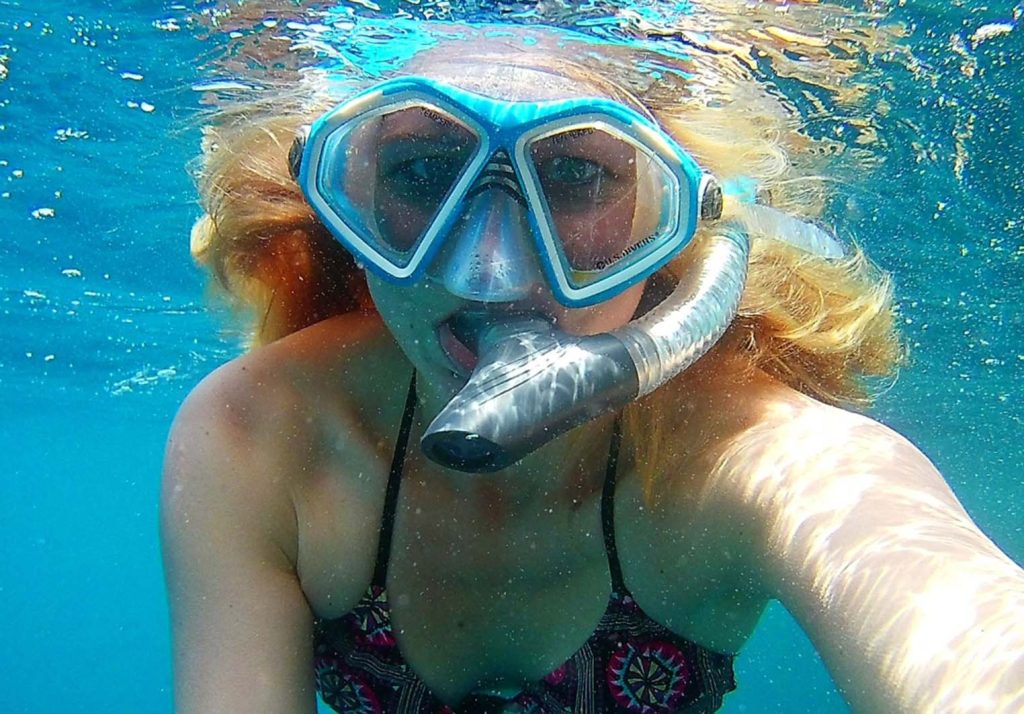
After returning to the boat, we had ample time to change into dry clothes before embarking on a short sunset excursion. Once again, we encountered the penguins, this time on land, and captured photographs of the volcanic rock formations.
Following our time with the Galapagos penguins, we gathered for our evening briefing on the second day of our journey. We were informed that breakfast would be at 6 AM the next day. Another early start was ahead of us, but after such an exhilarating day, everyone eagerly retreated to their cabins after enjoying another delightful dinner.
The next morning, our 5:30 AM alarm signaled the start of a new day. I was already prepared to rise, even though my skin had suffered a sunburn from the previous day due to overexposure to sunlight and insufficient sunscreen. We savored a hearty breakfast before setting out at 6:30 AM for our first destination of the day: Las Bachas Beach on Santa Cruz Island.
Once again, we arrived at a seemingly desolate beach, where the only signs of life were the fresh tracks left by nesting sea turtles. Our guide commented on these tracks, suggesting that we must have just missed the turtles’ nesting activities, given how fresh the tracks appeared.
The only companions joining us on our morning beach walk were hundreds of Sally Lightfoot crabs. These agile creatures scurried swiftly along the rocky shoreline, their bright orange and red bodies visible from a distance. These nimble crabs were aptly named after Caribbean dancers for their ability to climb rocks’ vertical slopes and dash in all directions, making it easy to see why they were likened to dancers.
We continued our journey to a small lagoon known as a popular feeding spot for flamingos. Upon our arrival, we were met by a lone flamingo walking gracefully on the muddy water’s surface. With only around 600 flamingos in the Galapagos, spotting even one of these uniquely colored birds felt quite special.
Following our encounter with the flamingo, it was time for another snorkeling session. This time, we had the opportunity to swim with sea turtles, a sight that never lost its charm for me. The species of sea turtle we encountered was the green sea turtle, the only type that nests in the Galapagos. Like many sea turtle species, green sea turtles are critically endangered, with their nests often destroyed by other animals, and their hatchlings at risk of becoming prey for birds before reaching the ocean.
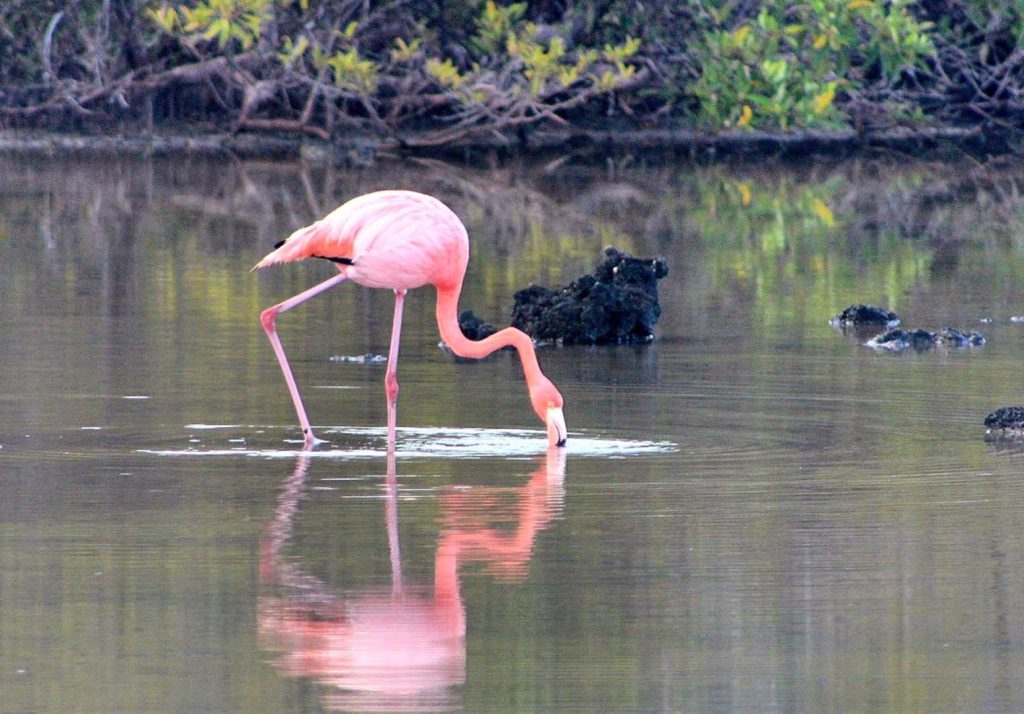
We swam alongside these majestic creatures in the midst of the coral, observing them graze on sea grass and surface for occasional breaths of air. For me, it was the perfect way to spend a Sunday morning.
Upon returning to the boat, much like the journey out, we were welcomed with fresh fruit juices and snacks. The rest of the morning was spent on the boat, basking in the sun, reading, or simply gazing out at the vast sea.
One of the things I cherished about the Galapagos cruise was the delicious food on board. At times, it felt like eating was all we did, especially that morning. Between our post-snorkeling snacks and lunch, we indulged in another tasty snack, this time with cheese-filled empanadas. Then, it was already time for lunch. Lunch was always served buffet-style, with a spread of vegetables, rice, various meat options, and fresh salads. As a vegetarian, our chef ensured there was a special dish prepared for me at every meal, including a vegetarian version of ceviche (while the rest of our group enjoyed the “traditional” ceviche).
Several more hours on board, and we arrived at San Cristobal, where we disembarked to spend the afternoon in the small town of Ayora. There, we purchased some souvenirs, enjoyed a refreshing drink, or checked our emails (there was no Wi-Fi on the boat). The sea lions that seemed to have taken over the entire town were a highlight. They lounged lazily on the nearly empty pier, frolicked in the water, and stretched out on some benches by the dock.
Observing life in these small Galapagos towns was captivating. Can you imagine growing up in such a remote place? The town featured a handful of souvenir shops, restaurants, a few small inns, and a large playground for children to enjoy.
We returned to the boat just in time to witness another stunning sunset and then indulged in our farewell dinner and cocktail party. The days on the boat passed by too quickly.
However, my Galapagos adventure wasn’t entirely over. On our final morning, we awoke early and embarked on one last sunrise snorkeling session around Kicker Rock. Kicker Rock is a prominent rock formation in the middle of the ocean and is a popular spot for hammerhead sharks.
Yes, it didn’t take long before we spotted our first shark! Apart from sharks, we encountered a group of sea lions, a solitary sea turtle, and hundreds of brilliantly colored fish. It was a remarkable conclusion to our four-day cruise journey.
After a sumptuous breakfast, we disembarked at San Cristobal, where we were once again welcomed by the local sea lions occupying every available spot around the dock. Spending our last moments with these adorable creatures, we then headed to the airport, with our final adventure awaiting us.
As our cruise ended on a different island from our departure point, we had to take a small 8-seat plane back to the main Baltra Airport. It was my first time flying in such a small plane, and having the front-row seat made it even more spectacular than before.
As we neared Baltra Airport, our connecting flight to Guayaquil was already waiting, and I couldn’t help but wish to skip that flight and spend more time in this remote paradise. I wasn’t quite ready to return to the mainland, where emails, work, and deadlines awaited me. I hope I can make it back to the Galapagos, and if I do, I’ll make sure to stay for at least four days or more – I already missed the Grandeur, and we had left only a few hours ago. I want to explore the islands we didn’t get to see on the cruise, like Darwin Bay on Genovesa Island or the beaches on San Cristobal Island.
